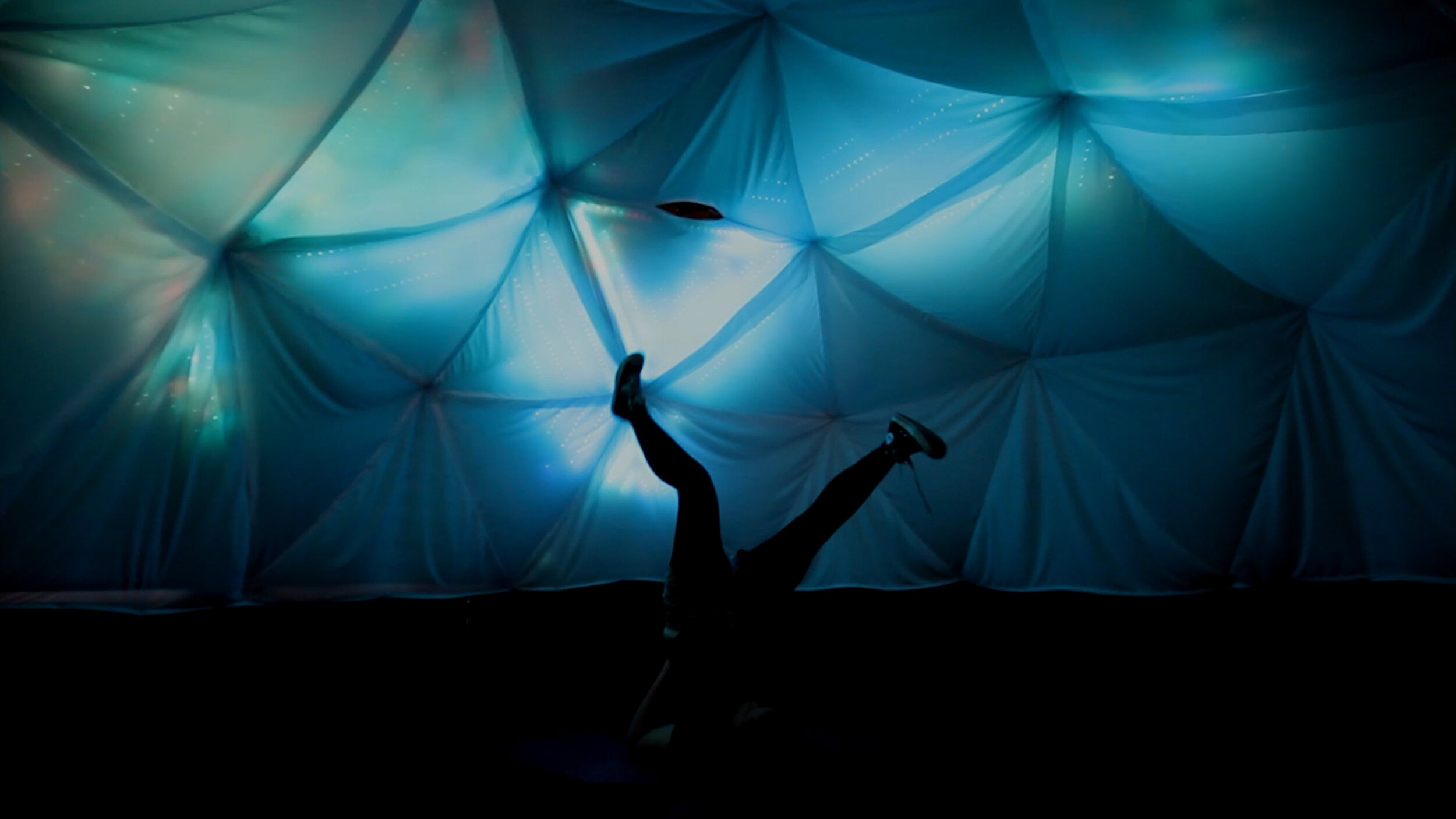
WHEN IN DOME (2018)
When in Dome is a spatial light installation designed to explore group experience. A geodesic dome filled with lights responds to the movement of people inside, providing a space for shared interaction.
When a group of people are engaged in an experience, a powerful feeling that “this is happening to all of us together” can arise. Much like an individual can enter a state of ‘flow‘ when they are fully immersed in an activity, a group can have ‘swing’ when participants connect through a shared experience. Offering a multi-user interface for interaction can foster human connection, even between strangers.
Movement is magnified and augmented as the lights shimmer and glow around the surface of the dome. Any individual is able to turn a wave of the arm, tilt of the head or twirl of their whole body into a performance for others to watch. When pairs are conversing inside the dome, they will see the effect of their partner’s movements displayed behind them, enhancing the conversation on a new visual level.
The spherical geometric structure provides the perfect setting for a cosy and enjoyable experience. When in Dome is a place where people can spend time together.
Technical Information
The dome has a footprint of 4.2m diameter and sits atop 50cm legs. The height of entire dome is approx 2.6m.
There are 4378 individually addressable and mapped LEDs attached to triangular panels which are suspended from the dome. These panels face inwards and the lights are diffused with a bespoke piece of fabric which hangs inside the dome and creates a continuous billowing surface for participants to sit inside.
The LEDs are driven by 11 chips called Fadecandys. A Kinect is used to track movement inside the dome. I used Processing to write the software which tracks movement and displays it on the lights. I individually mapped the triangular sections of LED strip across the Processing canvas. Anything I draw (using code) on the canvas appears on the lights on the surface of the dome in real time.
The algorithm I have written uses the Kinect’s infrared depth sensing. An average “background” reading of the depth feed is taken and gradually adjusted over time, which finds still objects so they can be eliminated. Objects in motion are then found by looking for pixels that are significantly closer or further away than this background reading. These pixels are displayed onto the lights. The colour of these pixels fades through the full spectrum, and each individual pixel is given a random dithering, to produce a shimmery affect.
When no or little movement is found, the dome displays its own behaviour – irregular multicoloured shapes cause the whole dome to glow and gently fade from colour to colour. These shapes fade away as motion is detected inside the dome, and return if people become still.
A full technical overview and description of the build is available Instructables.













